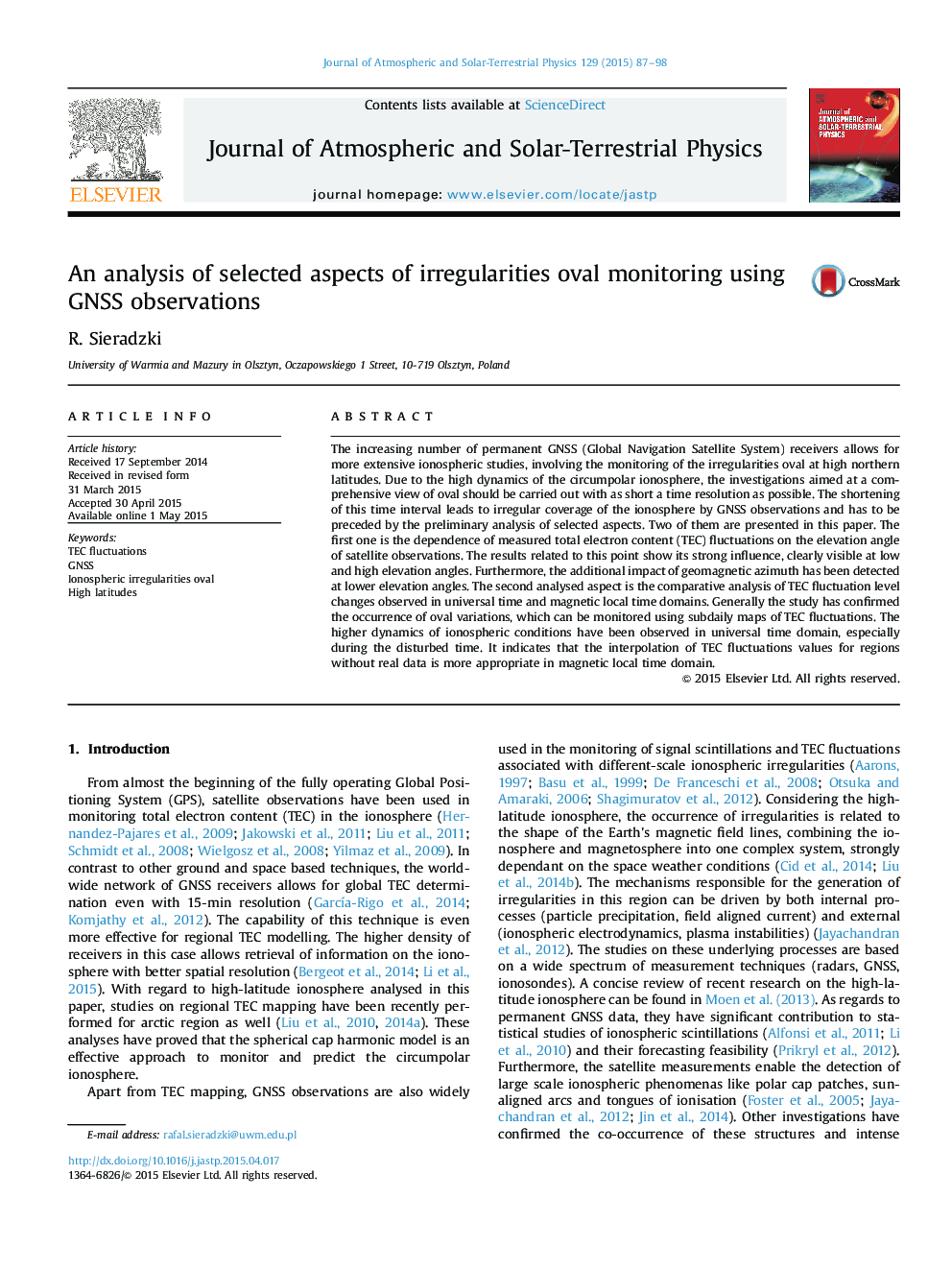| Article ID | Journal | Published Year | Pages | File Type |
|---|---|---|---|---|
| 1776428 | Journal of Atmospheric and Solar-Terrestrial Physics | 2015 | 12 Pages |
Abstract
The increasing number of permanent GNSS (Global Navigation Satellite System) receivers allows for more extensive ionospheric studies, involving the monitoring of the irregularities oval at high northern latitudes. Due to the high dynamics of the circumpolar ionosphere, the investigations aimed at a comprehensive view of oval should be carried out with as short a time resolution as possible. The shortening of this time interval leads to irregular coverage of the ionosphere by GNSS observations and has to be preceded by the preliminary analysis of selected aspects. Two of them are presented in this paper. The first one is the dependence of measured total electron content (TEC) fluctuations on the elevation angle of satellite observations. The results related to this point show its strong influence, clearly visible at low and high elevation angles. Furthermore, the additional impact of geomagnetic azimuth has been detected at lower elevation angles. The second analysed aspect is the comparative analysis of TEC fluctuation level changes observed in universal time and magnetic local time domains. Generally the study has confirmed the occurrence of oval variations, which can be monitored using subdaily maps of TEC fluctuations. The higher dynamics of ionospheric conditions have been observed in universal time domain, especially during the disturbed time. It indicates that the interpolation of TEC fluctuations values for regions without real data is more appropriate in magnetic local time domain.
Keywords
Related Topics
Physical Sciences and Engineering
Earth and Planetary Sciences
Geophysics
Authors
R. Sieradzki,
